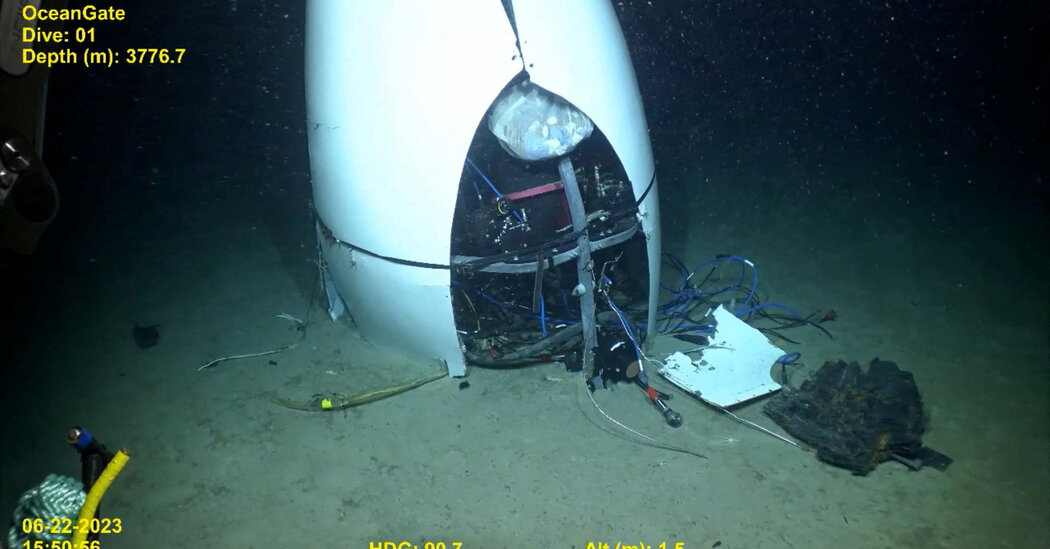Contrary to public reports last year, the passengers probably had no idea that the vessel was about to implode.
Over the past two weeks, the Coast Guard has held hearings on how the Titan, a privately owned submersible vessel that imploded 15 months ago at the bottom of the North Atlantic Ocean, resulted in the deaths of the five people inside.
The Coast Guard has posted videos of Titan wreckage two miles beneath the water’s surface, as well as a detailed log of communications between the craft and its mother ship, scores of documents, and the recorded testimony of more than two dozen witnesses, including former employees of the sub’s maker, OceanGate.
The emerging evidence has provided answers or tentative answers to six questions that have haunted the unique tragedy.
Had OceanGate employees sounded any alarms?
Many, it turns out. David Lochridge, a former director of marine operations at OceanGate, testified that the company’s ethos centered on making money. OceanGate charged adventurers up to $250,000 to see the wreckage of the Titanic up close, but offered little by way of serious engineering for safe products. “It was all smoke and mirrors,” Mr. Lochridge said of the company’s operations. He said he was fired in 2018 after raising safety concerns.
Tony Nissen, a former engineering director at the company, said he had told Stockton Rush, an OceanGate founder, in 2019 that the craft was “not working like we thought it would.” As a result, the engineer kept the submersible from making a dive to the Titanic ruins that year. Then he was fired.
Phil Brooks, who became the company’s engineering leader in 2021, said OceanGate’s financial woes contributed to his decision to leave the company just months before the Titan and its crew were lost. “The company was economically very stressed,” he testified. As a result, he added, safety was “being compromised.”
